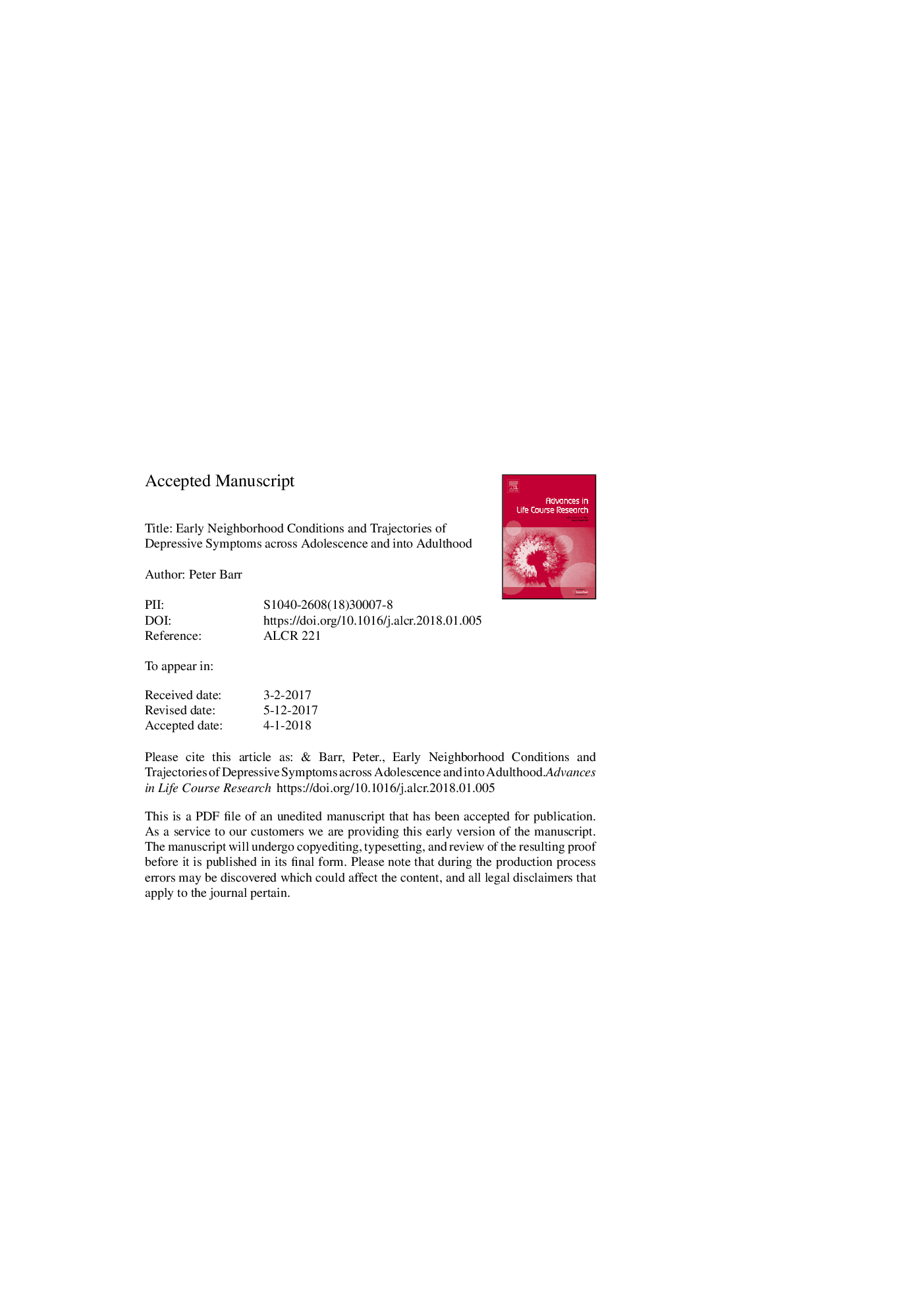ترجمه فارسی عنوان مقاله
شرایط روحی اولیه و مسیرهای علائم افسردگی در دوران نوجوانی و به سن بلوغ
عنوان انگلیسی
Early neighborhood conditions and trajectories of depressive symptoms across adolescence and into adulthood
| کد مقاله | سال انتشار | تعداد صفحات مقاله انگلیسی |
|---|---|---|
| 134381 | 2018 | 35 صفحه PDF |
منبع

Publisher : Elsevier - Science Direct (الزویر - ساینس دایرکت)
Journal : Advances in Life Course Research, Volume 35, March 2018, Pages 57-68
ترجمه کلمات کلیدی
محله ها، تجزیه طولی، افسردگی، بلوغ، جوان بلوغ
کلمات کلیدی انگلیسی
Neighborhoods; Longitudinal analysis; Depression; Adolescence; Young adulthood;

